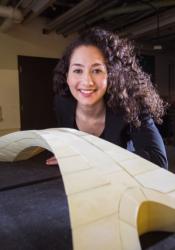Golden Horn
This is the location of Da VInci's Golden Horn bridge design. The design was requested by Sultan Bayezid II to connect Instanbul to Galata. The city was taken from Byzantium in 1453, and the Ottomons were adding more infrastructure to the city. The location of the bridge would probably be where the modern bridge called Halic on the map below is located. This would not connect Europe and Asia, but simply Instanbul with its neighboring town. Leonardo’s design was not selected as he provided only the designs and no instructions on how to build it. Leonardo also proposed a cable bridge across the Bosphorus Strait, which would have connected the two continents. This second bridge was not requested by the Sultan.Today, several cable bridges cross the strait.
Parent Map
Coordinates
Longitude: 28.966458321665

